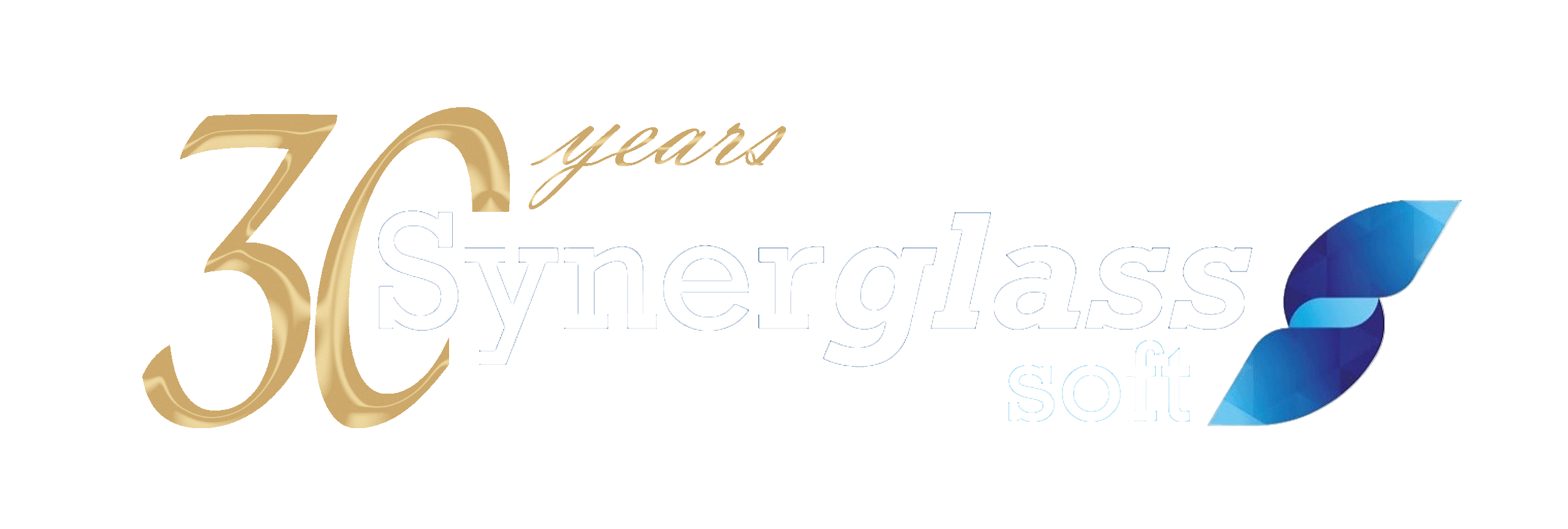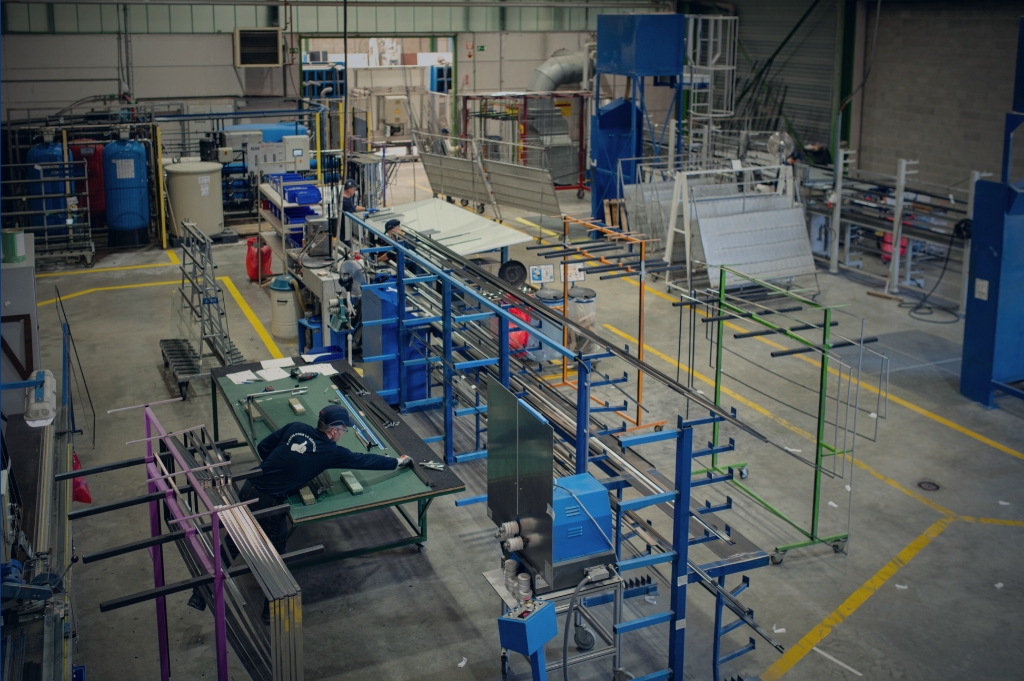If you’re in the glass processing industry, you know that every wasted sheet of glass means wasted money. Therefore, reducing scrap is a significant challenge. Large glass sheets, often cut into custom pieces for applications like windows, façades, and doors, require precision. When you rely on outdated or manual cutting processes, optimizing material usage becomes an uphill battle, impacting your bottom line.
At Synerglass-Soft, we’ve helped glass manufacturers improve their processes working closely with them. Our solutions are designed to help reduce scrap, maximize material usage, and improve overall efficiency. But, we also believe it’s crucial for you to find the right tool for your specific needs.
In this article, you’ll have an overview of the key features to look for in cutting optimization software, empowering you to make the best choice for your business. Whether you’re exploring optimization tools for the first time or upgrading your current system, this article will equip you with the knowledge to make an informed decision.
Cutting optimization in glass processing: why it’s essential for your business
Cutting optimization is key in glass processing. It involves determining the most efficient way to cut glasses into smaller, custom-sized pieces:
- Advanced software and cutting algorithms: These tools automate the cutting process.
- Adapting cutting patterns: The software adjusts the cutting plans to ensure maximum material usage.
- Tailored to production needs: Cutting plans are customized to meet the specific requirements of production.
The challenge in glass processing is that glass sheets, typically large, need to be cut into custom shapes and sizes for windows, doors, façades, and other applications. Manual cutting or inefficient cutting plans can lead to high scrap rates. Without an optimization strategy, even small inefficiencies in the cutting plan can result in high levels of material waste, increasing production costs. Optimization tools analyze the dimensions of each glass sheet and the specific sizes required for each cut to determine the most effective cutting patterns.
In short, cutting optimization helps companies reduce scrap, save time, and improve overall profitability by ensuring that every piece of glass is used as efficiently as possible. But to achieve these benefits, you need the right tool – one that is designed to handle the complexities of modern glass processing.
As you evaluate cutting optimization tools, keep in mind the following key elements to ensure that you are selecting the best solution for your business.
7 must-have elements in a cutting optimization tool for boosting efficiency
When selecting a cutting optimization tool for glass processing, it’s essential to look beyond basic functionality. The right tool should integrate various elements that work together to provide maximum efficiency, reduce waste, and improve the cutting process. Here are the key elements to consider:
Element #1 – Smart cutting algorithms to maximize yield and minimize scrap rate
A powerful algorithm is at the core of any cutting optimization tool. It analyzes the glass’s dimensions, defects, and production requirements to determine the best possible placement for each piece in the cutting pattern. This ensures the most efficient use of material. For instance, if there are two triangular pieces to cut, the algorithm may combine them into a rectangle, optimizing the layout and reducing material loss.
By considering these variables, the right algorithm maximizes yield and minimizes scrap. With a goal of achieving a scrap rate between 90% and 95%, it ensures that each cut is made in the most efficient way possible, boosting profitability and material efficiency.
Element #2 – Seamless integration with existing systems to improve workflow
A cutting optimization tool’s ability to integrate with your existing systems – such as your ERP or MES – is crucial. This ensures that cutting plans are communicated directly to your machines, minimizing data errors, eliminating manual entry, and streamlining the cutting workflow for greater efficiency.
Look for tools that integrate easily with your existing production systems, reducing the need for manual input and ensuring smooth data flow between all systems involved. This feature reduces operational friction and boosts overall production efficiency.
Element #3 – Real-time adjustments and feedback to prevent production disruptions
Real-time adjustments are crucial. A good cutting optimization tool should be able to quickly recalculate cutting plans whenever changes occur – such as defects or order alterations – ensuring smooth and uninterrupted production.
Real-time feedback ensures that any disruptions in production – whether due to broken sheets, defects, or last-minute changes in customer orders – are handled quickly and efficiently. This feature ensures that your production flow remains uninterrupted and that adjustments are made on the fly without causing delays.
But avoiding disruptions is only one piece of the puzzle – what happens to leftover glass from the cutting process? Without an efficient system to manage remnants, valuable material is not fully optimized.
Element #4 – smart glass remnants and sequencing management to optimize production
Handling leftover glass pieces or remnants is essential in any cutting optimization system. A quality tool should effectively integrate these leftover pieces into future cuts, ensuring maximum utilization of all material. Additionally, efficient sequencing ensures that cuts are made in the most efficient order, minimizing machine downtime and maximizing production capacity.
These advanced features allow for the efficient use of material while maintaining smooth operations. When leftover pieces are strategically incorporated into future jobs, you are getting the most out of your materials. Sequencing, on the other hand, ensures that cuts are made in the optimal order, further reducing inefficiencies.
Element #5 – Data-driven glass cutting to improve efficiency
A cutting optimization tool should also provide valuable insights through detailed analytics and reports, giving you visibility into scrap rates, material usage, machine efficiency, and overall production performance.
Having access to these performance metrics helps you identify bottlenecks, assess the effectiveness of your cutting process, and uncover opportunities for further optimization. Data-driven decision-making based on these insights will ensure continuous improvements in your operations.
Element #6 – Easy-to-use software to boost productivity
User experience plays a critical role in the effectiveness of cutting optimization software. If the interface is complicated or difficult to use, it will lead to mistakes and delays in production. A user-friendly interface ensures that operators can quickly and efficiently navigate the tool, allowing them to focus on their tasks without the need for extensive training.
Look for tools that offer an intuitive, easy-to-understand interface that allows operators to get up to speed quickly. This will ensure smoother adoption and reduce operational errors during production.
Element #7 – Scalability to future-proof your business
As your production requirements evolve, your cutting optimization tool should be able to grow with you. Whether you are expanding to new production lines or adding more complex operations, scalability ensures that the tool will accommodate your future needs without requiring a complete overhaul.
Choose a cutting optimization solution that can easily scale to meet the growing demands of your business. This flexibility will future-proof your investment and avoid the need for frequent upgrades or replacements.
Select the best cutting optimization tool for your business
Reducing scrap rates and improving efficiency is crucial for any glass processor. With the right cutting optimization tool, you can minimize material waste, enhance precision, and improve overall profitability.
For too long, many companies have struggled with inefficient cutting processes, leading to underutilized material and higher costs. But now, with the right technology, you can take control of your production and optimize it in the best way possible.
At Synerglass-Soft, we’ve helped glass manufacturers implement cutting optimization tools that deliver real results.
Your next step? Start by exploring our article on the 6 common cutting mistakes in the glass industry and how to overcome them. If you’re ready to explore how cutting optimization can impact your business, we’d love to help you assess your needs. Book a consultation with our industry experts to see if Symbiose could be the right solution for you. We’re here to guide you no matter your final choice.




